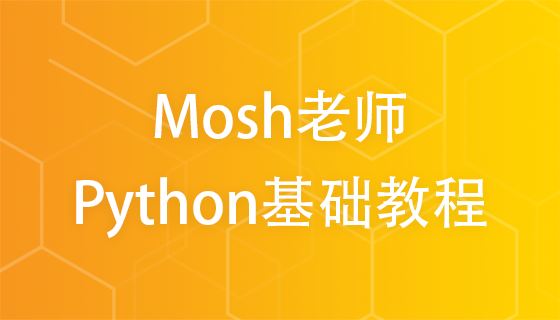reduce方法是将数组“浓缩”成一个值,其核心在于迭代并用reducer函数累积处理每个元素;1. reduce接收reducer函数和可选初始值,reducer处理累积器、当前值、索引和源数组;2. 初始值非必须但建议提供,避免错误并确保类型一致;3. 常见应用包括计算总和、数组去重、统计次数、扁平化数组及函数组合;4. 错误处理可通过try...catch实现,捕获后跳过错误元素;5. 与foreach、map、filter相比,reduce更灵活,可实现它们的功能,但其他方法更简洁适用于特定场景。

reduce方法,简单来说,就是把一个数组“浓缩”成一个值。但别被“浓缩”这个词吓到,它的用法其实非常灵活,能玩出很多花样。

reduce方法接收两个参数:一个reducer函数(用于执行累积操作)和一个可选的初始值。reducer函数本身接收四个参数:累积器(accumulator)、当前值(currentValue)、当前索引(currentIndex)和源数组(array)。
解决方案
立即学习“Java免费学习笔记(深入)”;

reduce的本质在于迭代。它会遍历数组的每一个元素,并用reducer函数将当前元素与累积器结合起来,生成一个新的累积器。最终,reduce会返回最后一次reducer函数执行后的累积器值。
举个例子,计算数组的总和:

const numbers = [1, 2, 3, 4, 5]; const sum = numbers.reduce((accumulator, currentValue) => accumulator + currentValue, 0); console.log(sum); // 输出 15
在这个例子中,reducer函数就是 (accumulator, currentValue) => accumulator + currentValue,它简单地将累积器和当前值相加。初始值是 0,这意味着第一次执行reducer函数时,累积器的值为 0,当前值为 1。
reduce的强大之处在于,累积器可以是任何类型的值,不仅仅是数字。它可以是对象、数组,甚至是函数。这使得reduce可以用来实现各种复杂的算法。
reduce方法的初始值是必须的吗?
不是必须的,但强烈建议提供。如果省略初始值,reduce会使用数组的第一个元素作为初始累积器值,并从数组的第二个元素开始迭代。如果数组为空且没有提供初始值,reduce会抛出 TypeError 错误。提供初始值可以避免这种错误,并确保reduce的行为可预测。
另外,当数组的元素类型与最终结果类型不同时,必须提供初始值。例如,将一个数字数组转换为一个对象:
const numbers = [1, 2, 3];
const obj = numbers.reduce((accumulator, currentValue) => {
accumulator[currentValue] = currentValue * 2;
return accumulator;
}, {}); // 初始值必须是一个空对象
console.log(obj); // 输出 { '1': 2, '2': 4, '3': 6 }reduce有哪些常见的应用场景?
除了计算总和,reduce还有很多其他的应用场景,比如:
const arr = [1, 2, 2, 3, 4, 4, 5];
const uniqueArr = arr.reduce((accumulator, currentValue) => {
if (!accumulator.includes(currentValue)) {
accumulator.push(currentValue);
}
return accumulator;
}, []);
console.log(uniqueArr); // 输出 [1, 2, 3, 4, 5]const arr = ['a', 'b', 'a', 'c', 'b', 'b'];
const counts = arr.reduce((accumulator, currentValue) => {
accumulator[currentValue] = (accumulator[currentValue] || 0) + 1;
return accumulator;
}, {});
console.log(counts); // 输出 { a: 2, b: 3, c: 1 }const arr = [[1, 2], [3, 4], [5, 6]]; const flattenedArr = arr.reduce((accumulator, currentValue) => accumulator.concat(currentValue), []); console.log(flattenedArr); // 输出 [1, 2, 3, 4, 5, 6]
const add = (x) => x + 1; const multiply = (x) => x * 2; const subtract = (x) => x - 3; const composedFunction = [add, multiply, subtract].reduce( (composed, fn) => (x) => composed(fn(x)), (x) => x ); console.log(composedFunction(5)); // 输出 9 (先 add(5) -> 6, 再 multiply(6) -> 12, 最后 subtract(12) -> 9)
如何处理reduce过程中的错误?
在reducer函数中,可能会遇到各种错误,比如类型错误、数据错误等。处理这些错误的关键在于在reducer函数中进行适当的错误检查和处理。
可以使用 try...catch 语句来捕获reducer函数中的错误,并根据实际情况进行处理。例如,可以记录错误日志、跳过当前元素、或者抛出一个新的错误。
const numbers = [1, 2, 'a', 4, 5];
const sum = numbers.reduce((accumulator, currentValue) => {
try {
if (typeof currentValue !== 'number') {
throw new Error('Invalid number');
}
return accumulator + currentValue;
} catch (error) {
console.error('Error:', error.message);
return accumulator; // 跳过当前元素
}
}, 0);
console.log(sum); // 输出 12在这个例子中,当遇到非数字类型的元素时,会抛出一个错误,并在控制台输出错误信息,然后跳过当前元素,继续计算下一个元素。
reduce与forEach、map、filter的区别是什么?
总的来说,forEach、map、filter 都是 reduce 的特殊情况。reduce 可以实现它们的功能,但它们更加简洁易懂,适用于特定的场景。选择哪个方法取决于实际的需求。如果只需要遍历数组,执行一些副作用操作,可以使用 forEach。如果需要转换数组的元素,可以使用 map。如果需要过滤数组的元素,可以使用 filter。如果需要将数组“浓缩”成一个值,或者需要实现一些复杂的算法,可以使用 reduce。
以上就是JavaScript的reduce方法怎么用?有哪些应用场景?的详细内容,更多请关注php中文网其它相关文章!

每个人都需要一台速度更快、更稳定的 PC。随着时间的推移,垃圾文件、旧注册表数据和不必要的后台进程会占用资源并降低性能。幸运的是,许多工具可以让 Windows 保持平稳运行。




Copyright 2014-2025 https://www.php.cn/ All Rights Reserved | php.cn | 湘ICP备2023035733号